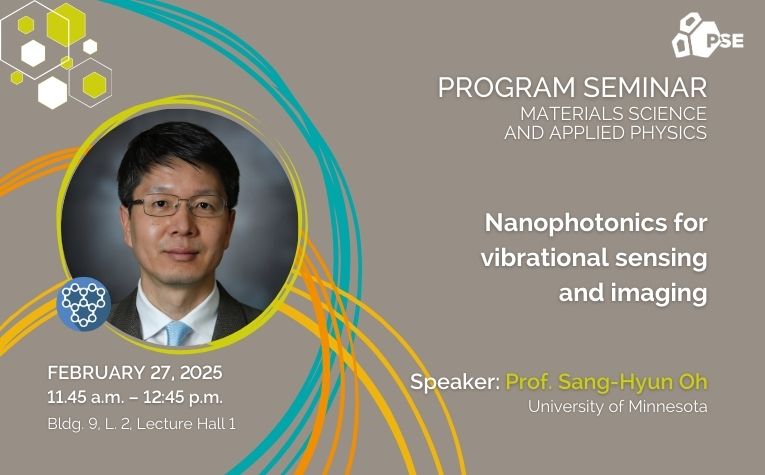Feb 2025

Abstract
This presentation will explore the use of advanced nanofabrication techniques, specifically template stripping and atomic layer lithography, in developing new biosensors and imaging tools across various spectral ranges, including visible, infrared, and terahertz. Template stripping has been instrumental in replicating ultrasmooth patterned metals, sharp metallic probes, and enhancing graphene plasmonics using silicon templates. Atomic layer lithography has taken us a step further, allowing the wafer-scale creation of metallic gaps as small as 1 nanometer. These techniques have laid the foundation for sensitive nanophotonic biosensors, terahertz cameras improved with quantum dots, and microfluidic biochips that operate wirelessly. Looking ahead, our focus will be on expanding the capabilities of these technologies, particularly in advancing quantum-dot-enhanced cameras and integrating nanophotonics into waveguides, to push the boundaries of biosensing, imaging, and disease diagnostics.
Biography
Sang-Hyun Oh is a McKnight Professor and the Sanford P. Bordeau Chair in the Dept. of Electrical and Computer Engineering at the University of Minnesota. He received his B.S. in Physics from KAIST, Korea, and Ph.D. in Applied Physics from Stanford University. His team and collaborators have contributed to the development of template stripping, atomic-layer lithography, and their applications in nanophotonics. A Fellow of Optica, he is also the founding Editor-in-Chief of a Nature research journal, npj Biosensing. He has been elected vice chair of the 2026 Gordon Research Conference on Plasmonics and Nanophotonics.